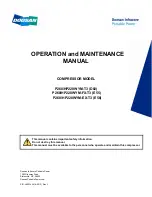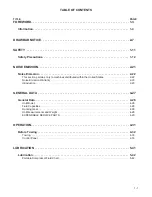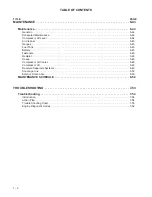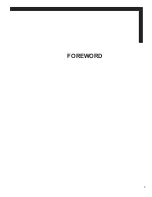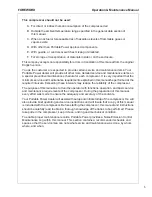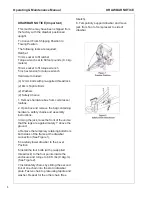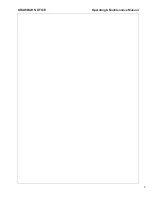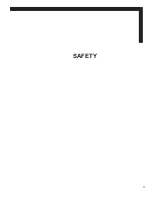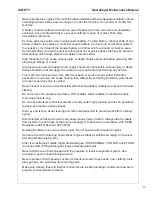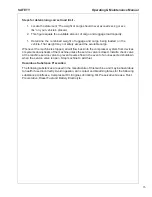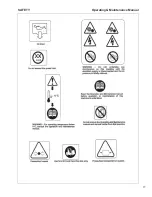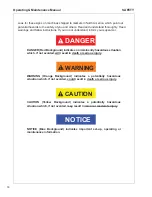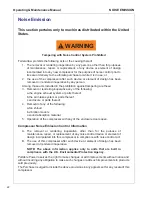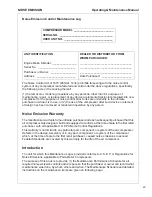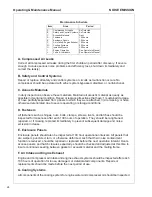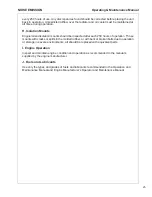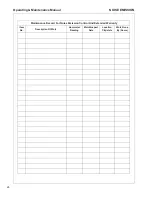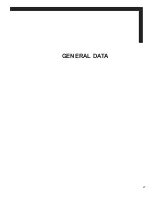
Operating & Maintenance Manual
SAFETY
12
Safety Precautions
General
Ensure that the operator reads and understands the decals and consults the manuals before
maintenance or operation.
Ensure that the Operation and Maintenance manual, and manual holder if equipped, are not
removed permanently from the machine.
Ensure that maintenance personnel are adequately trained, competent and have read the
manuals. Make sure that all protective covers are in place and that the canopy/doors are
closed during operation.
The specification of this machine is such that the machine is not suitable for use in flammable
gas risk areas. If such an application is required then all local regulations, codes of practice
and site rules must be observed. To ensure that machine can operate in a safe and reliable
manner, additional equipment such as gas detection, exhaust spark arrestors, and intake
(shut-off) valves may be required, dependent on local regulations or the degree of risk
involved.
Air discharged from this machine may contain carbon monoxide or other contaminants which
will cause serious injury or death. Do not breathe this air.
Compressed air can be dangerous if incorrectly handled. Before doing any work on the unit,
ensure that all pressure is vented from the system and that the machine cannot be started
accidentally.
Ensure that the machine is operating at the rated pressure and that the rated pressure is
known to all relevant personnel.
All air pressure equipment installed in or connected to the machine must have safe working
pressure ratings of at least the machine safety valve rating.
If more than one compressor is connected to one common downstream plant, effective check
valves and isolation valves must be fitted and controlled by work procedures, so that one
machine cannot accidentally be pressurized or over pressurized by another.
Compressed air must not be used for a feed to any form of breathing apparatus or mask.
The discharged air contains a very small percentage of compressor lubricating oil and care
should be taken to ensure that downstream equipment is compatible.
If the discharged air is to be ultimately released into a confined space, adequate ventilation
must be provided.
When using compressed air, always use appropriate personal protective equipment.
All pressure containing parts, especially flexible hoses and their couplings, must be regularly
inspected, be free from defects and be replaced according to the Manual instructions.
Avoid bodily contact with compressed air.
The safety valve located in the separator tank must be checked periodically for correct
operation.
Never operate unit without first observing all safety warnings and carefully reading the
operation and maintenance manual shipped from the factory with this machine.
Summary of Contents for D82
Page 2: ...2...
Page 5: ...3 FOREWORD...
Page 8: ...Operation Maintenance Manual FOREWORD 6...
Page 9: ...7 DRAWBAR NOTICE...
Page 11: ...DRAWBAR NOTICE Operating Maintenance Manual 9...
Page 12: ...Operating Maintenance Manual DRAWBAR NOTICE 10...
Page 13: ...11 SAFETY...
Page 16: ...Operating Maintenance Manual SAFETY 14...
Page 18: ...Operating Maintenance Manual SAFETY 16...
Page 19: ...SAFETY Operating Maintenance Manual 17...
Page 21: ...SAFETY Operating Maintenance Manual 19...
Page 23: ...21 NOISE EMISSION...
Page 29: ...27 GENERAL DATA...
Page 32: ...Operating Maintenance Manual GENERAL DATA 30...
Page 33: ...31 OPERATION...
Page 43: ...41 LUBRICATION...
Page 45: ...43 MAINTENANCE...
Page 55: ...53 TROUBLESHOOTING...

